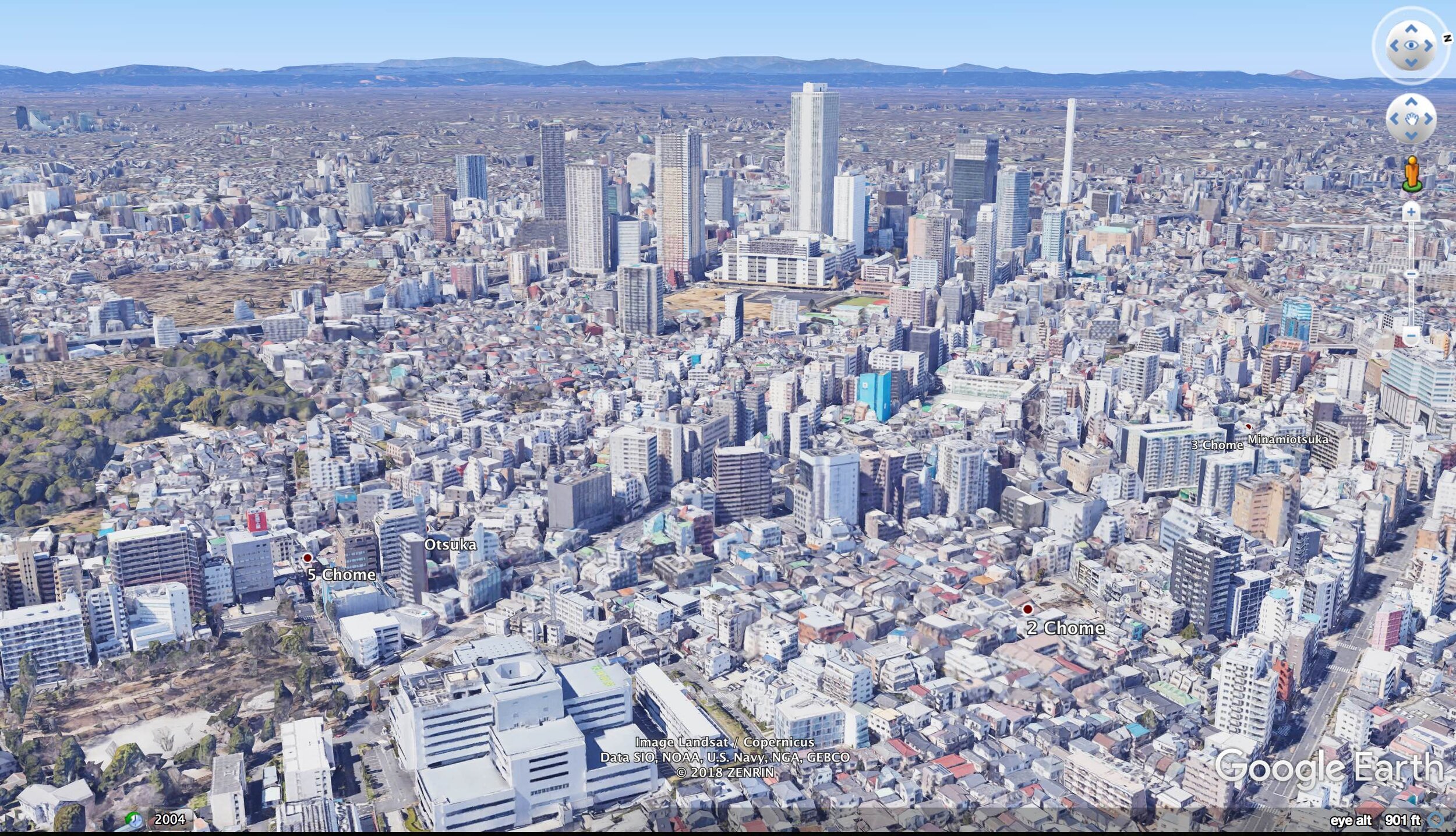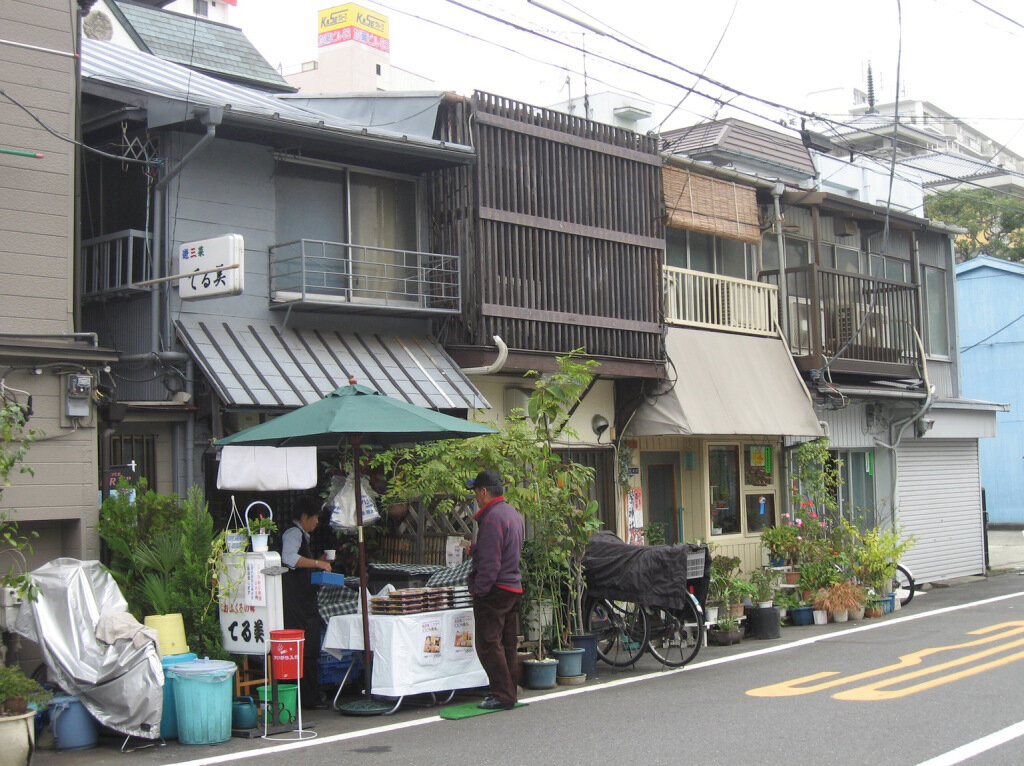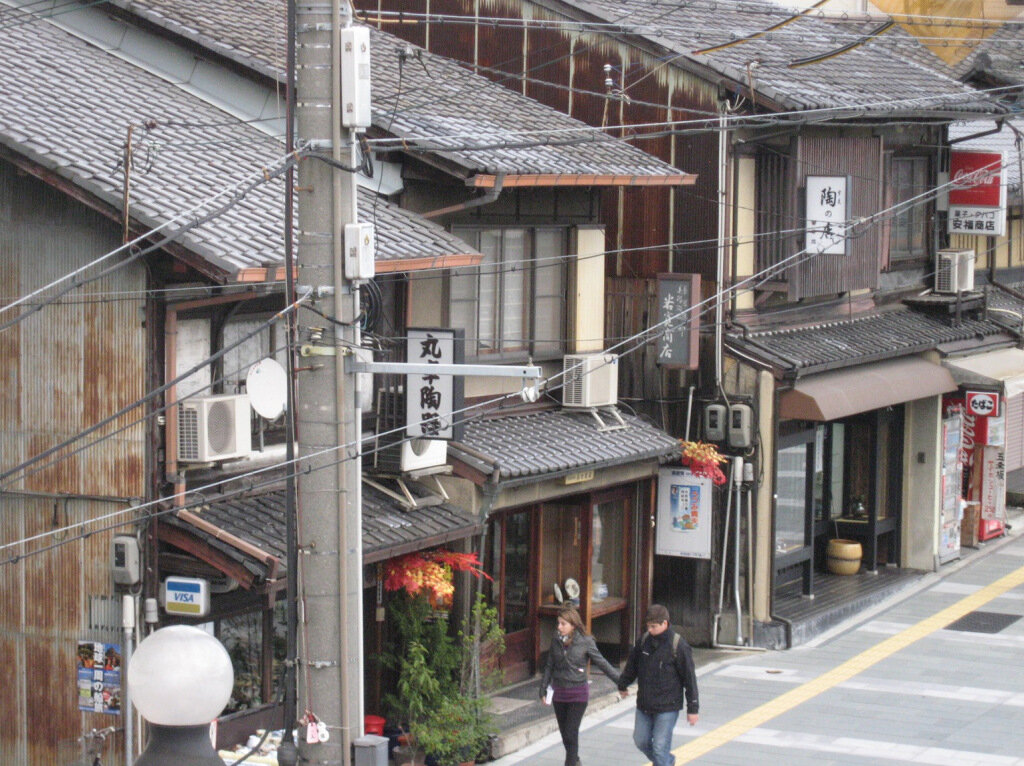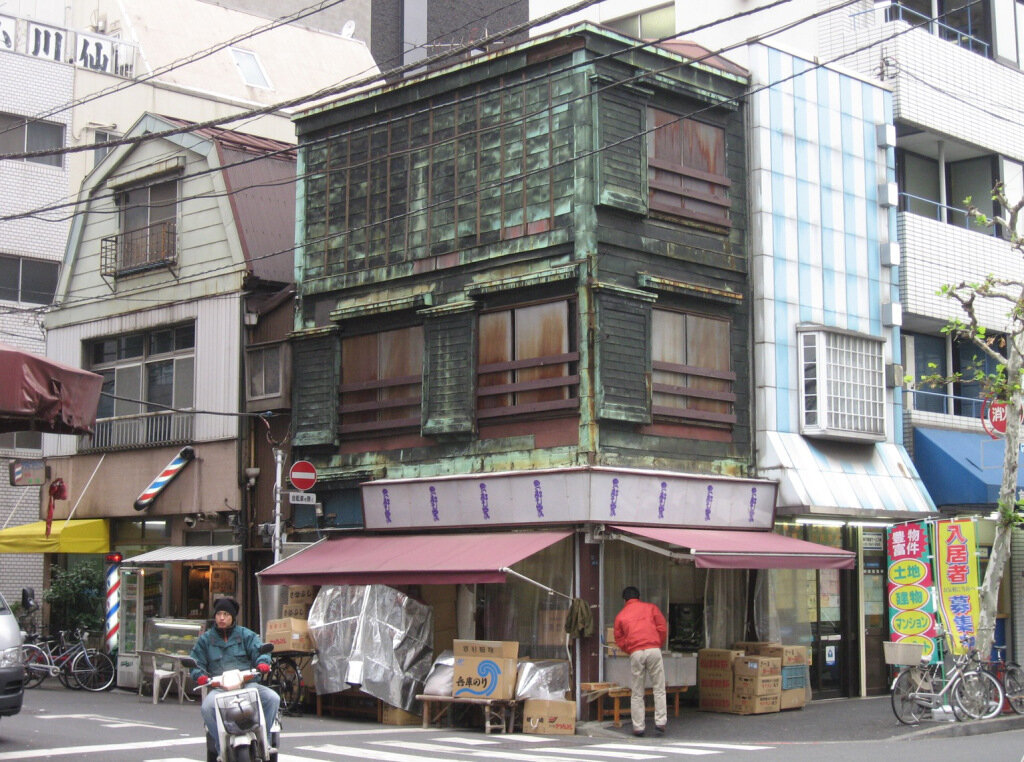Traditional Development is Not Retro. It's Timeless.
Alon Levy, of the frequently brilliant transit and urbanism blog Pedestrian Observations, has written a piece called "The Future is Not Retro," and in its introduction, invokes Strong Towns:
One faction of urbanists that I’ve sometimes found myself clashing with is people who assume that a greener, less auto-centric future will look something like the traditional small towns of the past. Strong Towns is the best example I know of of this tendency, arguing against high-rise urban redevelopment and in favor of urbanism that looks like pre-freeway Midwestern main streets.
This description isn't entirely off the mark in terms of the physical form of the places we've tended to laud as models. (Though you'll also find plenty of praise for the likes of New York, Paris and Vancouver here.) But they’re misunderstanding why we look to pre-car cities as a model. And Levy is not the only one to perceive Strong Towns as fundamentally a nostalgic or backward-looking movement.
We're not. Here's why the Strong Towns vision isn't "retro" but, we believe, as relevant to the challenges of the 21st century as it was to our ancestors.
It's Not About Nostalgia
Image via Flickr
The traditional development pattern found in almost all cities built before the automobile is a deeply resilient, highly financially productive, nearly foolproof way to design a city. Yet Americans, at least those raised in suburbia, tend to associate that development pattern with nostalgia or even kitsch—think, for example, of Disneyland's Main Street USA, which consciously echoes the small-town Midwest of Walt Disney's childhood.
Nostalgia has always been a potent force in the marketing of real estate in the United States. As a relatively young country, we may compensate for our lack of living traditions in architecture and town building by leaning into the appeal of the idea of tradition.
Levy observes that the first generation of American suburbs were marketed via a kind of nostalgia. They were seen at the time not as an attempt to reshape cities around the automobile, but as an attempt to recapture a rural aesthetic and associated rural social virtues (something which our charmless stroad-and-big-box-scapes have largely not accomplished). And yet, it was reshaping our lives around the automobile that proved to be the primary practical effect of the Suburban Experiment.
Levy's point is that the effect of suburbanization was very different from the intent. Suburbia today largely does not look like a rural idyll, but is dominated by the expansive (and expensive) automobile infrastructure necessary to get people to and from urban jobs. By extension, they argue that an attempt today to recapture the physical forms of pre-automobile development is unlikely to actually recapture the virtues (perceived or real) of that lifestyle. The future is not retro.
It's true that the economy that produced the corner store with the apartment on top is largely gone, and simply restoring the physical form of a 19th-century city won't automatically bring it back. (And today's incarnation of the mom-and-pop main street business model thrives in places that look very different, like mobile shops and immigrant-dominated strip malls.) History rhymes, but it doesn't repeat.
And yet, there is an absolutely crucial difference between 1950s suburbanization and the 2020s-plus flowering of rejuvenated strong towns and neighborhoods that we'd like to see. The former was a radical experiment in reinventing the urban environment based on principles that had never been tested. The latter would be a return to principles that we have every reason to believe are still relevant.
A street in Turkey. Photo by Johnny Sanphillippo.
Traditional Cities are Well-Adapted Human Habitat
For good reason, the first chapter of Strong Towns: a Bottom-Up Revolution to Rebuild American Prosperity, by Strong Towns founder Charles Marohn, is called "Human Habitat." The book doesn't start with stroads, or with municipal finance and the Growth Ponzi Scheme: it starts by laying out the understanding that for thousands of years, we've adapted our cities through trial and error. And the result has been certain commonalities among cities throughout the world and throughout human history. Compactness, narrow streets, human-scaled architecture, and a fine-grained mix of land uses are the norm from Jerusalem to Japan. It's because our cities are an adaptation to the kind of creature we are. They're human habitat. They're as human as an ant hill is, well, antlike.
These commonalities comprise the traditional development pattern. Its defining feature is simple. It is perfectly adapted to the prevailing transportation technology of human history: two legs.
And two legs are never going to be obsolete. There's no particular reason to think that humans a couple hundred years from now will get around in anything that resembles today's trains, let alone the weirdness that is the car: a 2-ton hunk of metal about 6 feet wide. There's a lot of reason, though, to think they'll walk.
When we depart from the wisdom of the traditional pattern, we run into trouble. American car-dependence is clearly a factor in our obesity epidemic. The loss of Third Places in our communities impoverishes civic life. The increasing separation of people by income and class (a result, in part, of monocultural neighborhoods built all at once at a grand scale) accelerates the decline of collective empathy. Mental illness has even been associated with the stress of existing in environments that don't conform to time-tested human-scale design principles. Not every experiment is a failure by any means, but we have certainly built places in the past century that are psychologically immiserating in ways no centuries-old, winding European alley is.
On the flip side, we can observe the positive social effects of traditional development nearly everywhere it exists. The casual interaction fostered by the likes of front porches. Places where kids can play in the street, the "natural surveillance" that comes from the constant presence of people in public spaces. The community cohesion enhanced by a strong local business community. The case for the various versions of the traditional development pattern, quite simply, is that we know it works.
There are caveats to all those linkages, both positive and negative. Reality is messy and defies simple cause-and-effect explanations. But the patterns are clear. Places that have endured not for 10 or 20 years but for centuries seem to have a set of things in common. We'd be foolish not to humble ourselves to learn from that.
The Traditional City Offers Resilience in an Age of Crisis
Traditional, walkable neighborhoods—not just transit-served cities—will be even more important in the face of crises to come, whether those stem from climate instability, political upheaval, an energy or food shortage or economic recession.
We live in a world in which we have spent ourselves into a debt-fueled illusion of wealth and are struggling to keep the party going. In the next few decades, some level of serious disruption to life as we know it is almost certain. And what we will need to weather it is not to play either God or (Robert) Moses and reshape the whole world (again!) to optimize it for what we think is the best way to confront today's crises. Rather, we need places that are readily adaptable to needs we haven't yet anticipated. Hubris won't solve our problems. Humility just might.
When we build neighborhoods that allow us to meet many of our basic needs within walking distance of our homes, and arrange a city out of many seamless connections between such neighborhoods—what Leon Krier calls expansion through duplication—the result is a low-tech sustainability through redundancy. It's not so reliant on complicated systems of control with potentially catastrophic points of failure. When the power goes out, the "smart" city doesn't look so smart, but the traditional city can still function. If Walmart or Amazon's supply chain, with its enormous carbon footprint and many externalities, is disrupted, the decentralized model of, say, the local farmer's market is likelier not to be.
But We Can't Go Back... Right?
It's true that we can't and won't just reverse-engineer a world that was built for a different economy and technology, and the future will not look like a simple return to the past. Even in a world in which we drastically cut our energy budget, we will have cars. Our big cities will have rail. We are unlikely to return to living life at the local scale to the full extent our great-grandparents did, barring a tremendous economic or civilizational disruption—and nobody here is wishing for that.
We should, however, continue (and in some cases rediscover) the practices of the past that are relevant to the present. Often where we don't, it's because we've "innovated" planning regimes over the past few decades that forbid such basic things as walkable communities. We can, and should, undo those regimes.
“Spiky” transit-oriented development rises amid low-rise suburbia, outside Vancouver, BC. (Source: Wikimedia Commons)
Levy proposes that the future will not look like the traditional (pre-car) pattern of human settlement, but will instead be "spiky." They mean spiky in a physical, visible sense—clusters of high-rise buildings around rapid transit stations, and large areas of low-rise buildings where not much redevelopment happens. They also mean spiky in a sense of the intensity of investment and activity.
This is a further departure from the historic norm of co-creation of our cities by many hands, toward a top-down model in which only a few actors actively shape the built environment. "Spiky" development is contingent on a financial system that can deliver huge increments of capital and debt finance—to the public sector for transit infrastructure planned and delivered at the scale of billion-dollar projects at a time, and to the private sector for high-rise development projects.
We do in fact live in a world where all of our financial mechanisms are tailored toward big actors and big projects, and if that regime persists, then a world of "spiky" places is likely. Life won't be bad in the "spikes" for those fortunate enough to inhabit them, but the social analogue of a spiky built environment is a spiky economy of winners and losers, increasingly segregated spatially from each other within, and between, cities and entire regions.
But what if the near-ish future is very different? What if it's characterized not by "spiky" finance but by the fragility, and at times outright failure, of those top-down arrangements? (In other words, what if 2008 was only a preview of what's to come?) Then things look different. I expect we'll see a resurgence of the spatial arrangements of the traditional development pattern (i.e. a fine-grained mix of places to meet various needs within walking distance) and I expect that it will be the poorest communities that lead the way. They'll do so out of necessity.
This won't be nostalgic, and it won't be an architectural revival: it won't look like Main Street at Disneyland, or Savannah or the French Quarter or Beacon Hill or Alamo Square. It's much more likely to look like a bunch of improvisational adaptations. Stealth duplexes and triplexes carved out of large suburban homes (this already happens). Home-based and mobile businesses. Community gardens to help meet food needs. But these things too are the traditional development pattern: places co-created, built incrementally, at a walking scale. (It's worth pointing out that these kinds of DIY adaptation are already the norm in the poorer parts of the world. An academic would call them "informal urbanism." Formal order under strict rules is usually a luxury of the rich.)
The Tokyo Model: The Organic City Meets Modern Technology


There's another vision of the future of cities. It's a world in which considerable "spikiness" is a reality—i.e. high density living around transit does make a resurgence—but so is bottom-up incrementalism and adaptation. Take away the convoluted financing and planning mechanisms of the Suburban Experiment, and you don't get Orenco Station. You might, however, get Tokyo, which Levy holds up as a model.
Tokyo is Levy's precedent for a "spiky" urban form that they seem to believe "offends nostalgic Westerners" (a group into which Strong Towns is lumped). I won't speak for every Strong Towns advocate, but Tokyo doesn't offend me in the least. Tokyo is a fantastic example of relatively organic urban growth and evolution. It's one that does happen to include a lot of tall buildings, because its development pattern has matured to that point. Tokyo's "spikes," the result of people (and thus real-estate markets) valuing proximity to rail stations, drop off gradually in height and intensity to the surrounding, lower-rise areas. These are moderate, organic gradations.
And Tokyo gets a lot right in terms of sustainability (in all senses of the word). The region is lauded by transit activists for its rail system, and by housing activists as a remarkably affordable city for its wealth and prestige, because there are few restrictions on where and what you can build. Tokyo has averted a housing crisis through decentralized action—and yes, some of this action results in big buildings. Nothing wrong with that!
I could see LA or Houston—places where a high tolerance for chaos is built into their urban DNA—becoming more like Tokyo over the next couple decades. For many other cities in North America, it's a long shot. But it's one perfectly good model.
But Tokyo has almost nothing in common with a world in which government planning directs almost all new construction to transit-oriented development areas and forbids it elsewhere—even if both outcomes are "spiky" in a sense.
At the ground level, Tokyo's urbanism is delightfully granular and human-scale:



And it's surprisingly similar to, say, an English village of a few hundred:
Image: Oast House Archive via Creative Commons license
What these faraway—and economically very different—places have in common are the sidewalk-level design features common to the traditional development pattern. Small storefronts, narrow streets, granularity.
This isn't retro, and it doesn't require low-rise buildings—it works with mid- and high-rise too. These features produce a highly functional place today for the same reason they produced a highly functional place 100 or 1000 years ago. That isn't going to change. At least not as long as humans are born with two legs.

Daniel Herriges has been a regular contributor to Strong Towns since 2015 and is a founding member of the Strong Towns movement. He is the co-author of Escaping the Housing Trap: The Strong Towns Response to the Housing Crisis, with Charles Marohn. Daniel now works as the Policy Director at the Parking Reform Network, an organization which seeks to accelerate the reform of harmful parking policies by educating the public about these policies and serving as a connecting hub for advocates and policy makers. Daniel’s work reflects a lifelong fascination with cities and how they work. When he’s not perusing maps (for work or pleasure), he can be found exploring out-of-the-way neighborhoods on foot or bicycle. Daniel has lived in Northern California and Southwest Florida, and he now resides back in his hometown of St. Paul, Minnesota, along with his wife and two children. Daniel has a Masters in Urban and Regional Planning from the University of Minnesota.